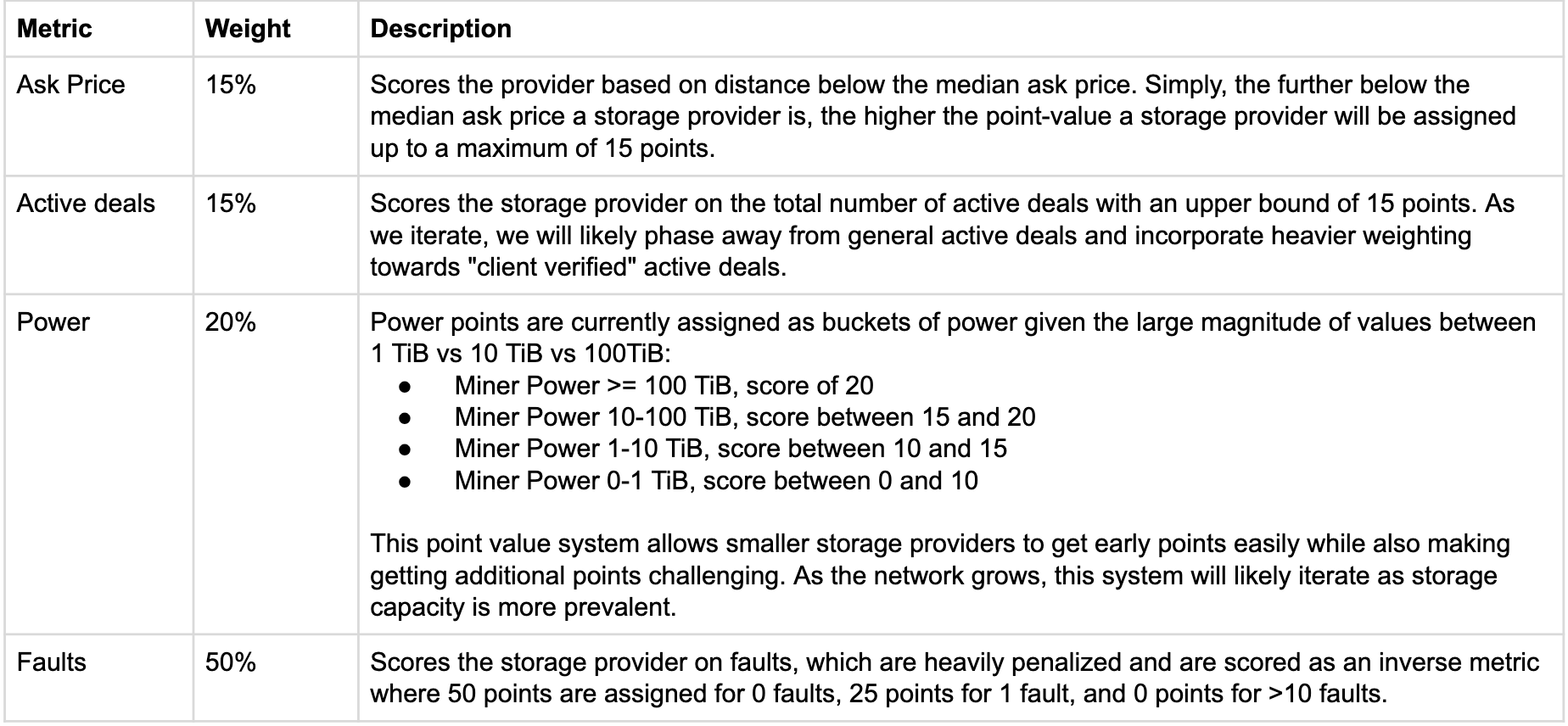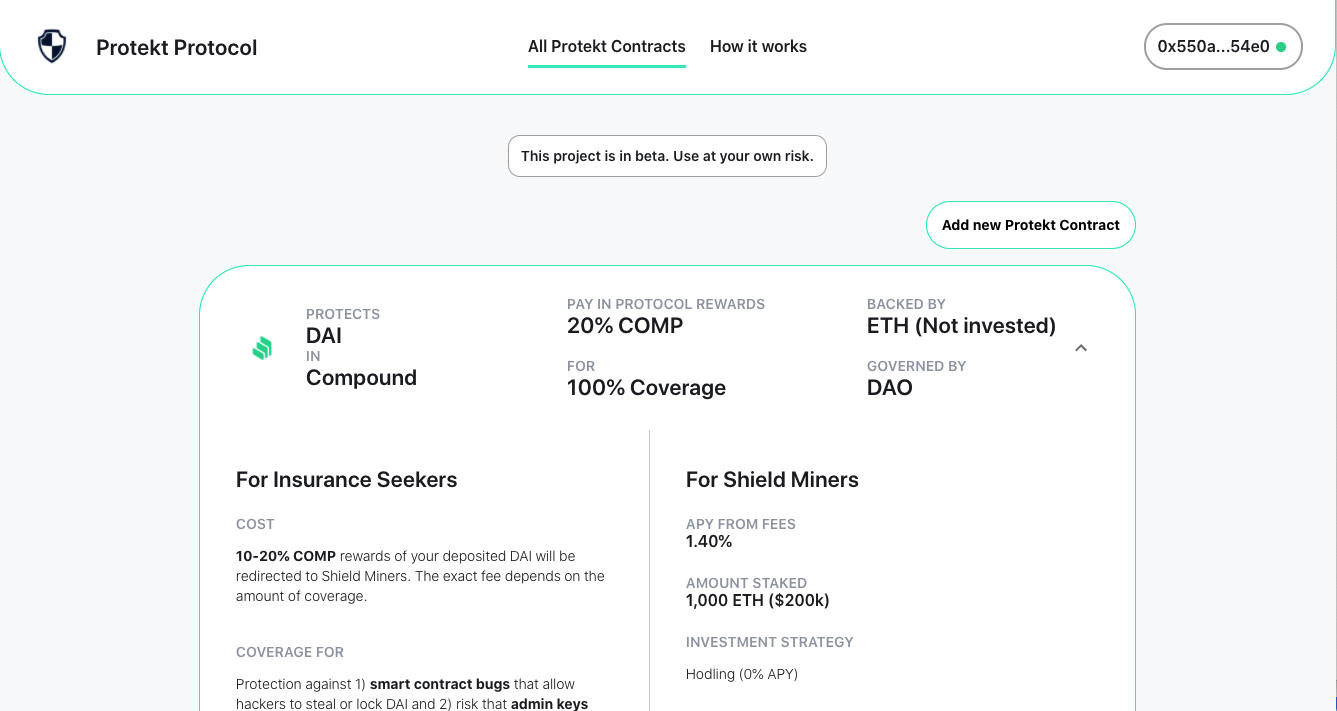Protekt Protocol
Protekt Protocol puts crypto to work insuring users against hacks, bugs, and exploits of any DeFi protocol or smart contract. The goal is to support and catalyze the growth of the DeFi ecosystem by protecting users from getting rekt.
Project Description
Similar to how Uniswap allows any token to have a spot market, Protekt Protocol allows any smart contract to be backed by a Protekt contract, which creates a market for the risk of lost assets held by the smart contract.
When setting up the Protekt contract, the user specifies an asset (DAI, ETH, USDC, etc.) and an underlying pool, which can be a lending pool, market making pool, staking pool, multi-sig wallet, etc. They also specify the fee model and rules for triggering and evaluating a claim. Once launched, insurees get coverage by minting pTokens and shield miners stake assets and earn rewards for assuming the risk of getting liquidated.
Protekt Protocol introduces a new insurance marketplace with several innovative features:
📜 ANYONE can back ANY capital pool with a composable insurance contract
💸 Insurees can mint wrapped tokens with built in coverage (never "buy cover")
🛡 Stakers (shield miners) deposit capital to assume liability and earn rewards
🔀 Configurable claims process via automated rules or a DAO
🏦 Payouts trigger a liquidation waterfall to spread risk through tranches
How it's Made
Protekt protocol is a suite of smart contracts written in Solidity, and a frontend (forked yearn) to interact with them.
Protekt contracts are configurable insurance markets that can be set up on top of any smart contract. Upon launching the contract, the creator specifies:
Underlying asset and capital pool
Fee model
Shield mining asset and investment strategy
Claims Manager (a programmatic smart contract or a DAO)
Fee models, investment strategy, and the claims process are each configurable but must conform to the same interface. Users can search for the best contract to meet their goals, and stakers can stake capital on the capital pools they are confident in. If a payout event occurs, any insuree can submitClaim() and kick off the claims process, which can be managed by programmatic rules, a DAO, or a centralized party.




